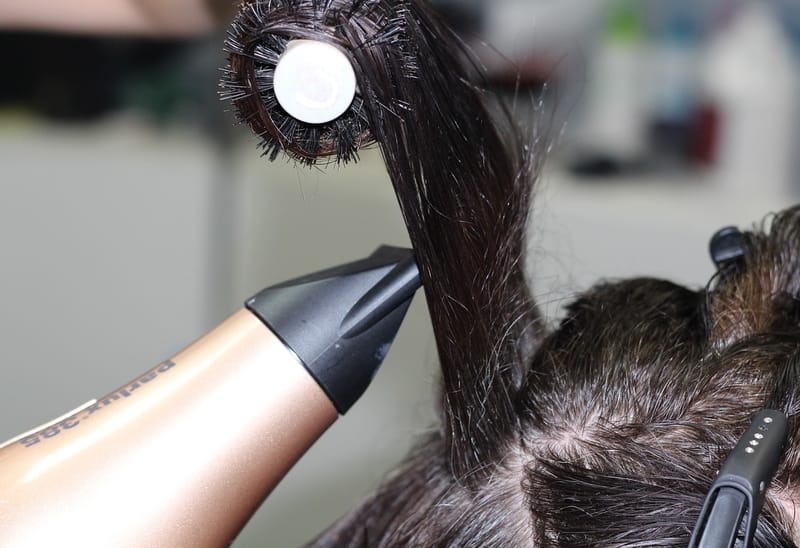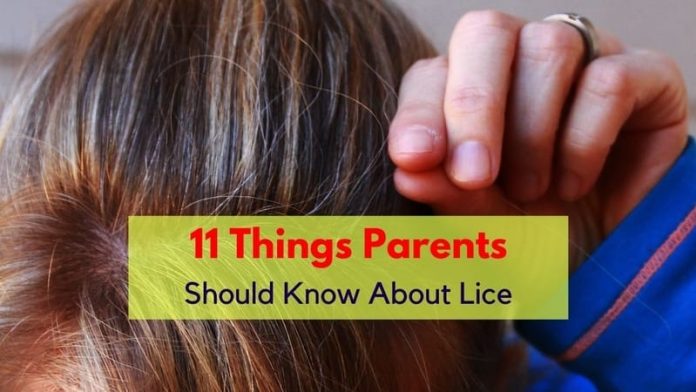It is estimated that each year, between 6 and 12 million children get head lice between the ages of 3 and 11. While we certainly hope your child won’t be one of them, if lice do show up in your home and on your child’s head, then we are here to shed a spotlight on the top things every parent needs to know about head lice.
We brought in the experts and are ready to share the latest and greatest research and clinical evidence about lice. We’ve distilled all this information down to 11 important things to know about lice. Ready to learn all about the dreaded “L-word?” Let’s get talking about lice!
1. Children Do Not Need To Stay Home From School Because of Lice
Children who have lice do not need to be quarantined, nor do they need to stay home from school. According to the CDC, if lice have been found on a child, they should finish the school day and start treatment at home. Once treatment has begun, the child can return to school immediately.
Ever since 2002, the American Academy of Pediatrics declared that no healthy child should miss school because of head lice and/or nits. In fact, both the American Academy of Pediatrics and the National Association of School Nurses both agree that the “no-nit” policy should be abolished. Absenteeism is not worth the slight chance that nits will spread to others.
2. Children Do Not Only Get Lice At School
Wouldn’t it be funny if lice only showed up in schools, preferring academic communities over other hangout spots? Lice do not favor one physical location over another. If humans are present, lice are potentially present as well. Lice are most often spread at elementary schools as there is a lot of head-to-head contact on playgrounds and during recess, or even during nap time. Other likely places where lice can easily spread are on camping trips, sleepovers, sport team practices or games. Lice only need a second to crawl from one head to another. In fact, lice can crawl 23 centimeters per minute as evidenced by a clinical update by Paediatrics Child Health Journal.
3. Lice Cannot Fly or Jump
One of the most common misconceptions about lice is that they can jump and fly. This is clearly proven not true simply by looking at the anatomy of lice. Lice do not have wings, nor do they have hind legs that would give them the ability to jump. The CDC asserts that “head lice move by crawling; they cannot hop or fly.” Moreover, lice have very sharp and nimble claws, which allow them to hook onto hair shafts firmly. Lice do not want to leave their source of food and warmth, the human scalp. You can’t shake them off, and once they have a food source, it’s improbable that they would choose to leave it.
4. Hair Gel, Hair Spray, and Hair Dye Do Not Deter or Kill Lice
Hair gel, hair spray, and other hair products have no effect on lice. Unless they are actual lice treatment products, regular hair products lack the ingredients necessary to affect lice. All hair products do is alter the characteristics and texture of the surface of hair. Even if your hair becomes more sticky, slippery, thick, or rigid, this does not change lice’s ability to successfully move throughout your scalp. Moreover, if you dye or color your hair, you’ll just be coloring the lice. These chemicals are not harmful to lice either.
5. Lice Do Not Prefer Clean Hair or Dirty Hair
Lice do not have a specific preference when it comes to types of hair. Lice can use curly hair, straight hair, short hair, or dyed hair as a habitat to live in. Even when it comes to dirty hair or clean hair, lice can still nimbly move through it and easily survive no matter what condition or state the hair is in. Professor Rick Speare affirms there is no evidence to support the theory that head lice prefer to live in clean hair or dirty hair.
6. Lice Don’t Hide In Cracks or In Sand Boxes
Lice aren’t like other insects or parasites. They aren’t like ticks or cockroaches. That means you won’t find lice hiding in cracks or perched on a low hanging branch. Lice aren’t hiding around every corner waiting to pounce! Lice exist almost exclusively on human hosts and can rarely be found on furniture, hats, scarves, beds, and brushes— items that have recently touched a lice-infested person’s head! We wanted to point this out as treating homes or schools with pesticides is not usually necessary. Treating heads is more important than homes, public spaces, or shared areas.
7. Do Not Use Hair Dryers to Kill Lice

While it may sound like a good idea to use hair dryers to kill lice, lice cannot be killed with heat unless the temperature reaches 130°F. The CDC points out that only a “temperature greater than 130°F can kill both head lice and nits.” While blow-dryers can reach a heat of 150°F at their highest setting, it can be dangerous to use that level of heat to attempt to kill lice. Burns are likely to occur on your scalp when trying to kill lice with blow-dryers, and it’s virtually impossible that you’d be able to kill all lice and nits with this method. Don’t risk painful burns because it is not an effective eradication method. Please refrain from attempting to use hair blow-dryers to kill lice and nits.
8. Animals Cannot Give You Head Lice
While you may want to blame Buddy for bringing head lice into your home, it is impossible to get lice from animals. Head lice exclusively feed on human hosts; they are completely uninterested in animals. The Merck Veterinary Manual attests that “lice are largely host-specific, living on one species” only!
9. You Can Not Suffocate Lice With Oils or Vaseline
Unfortunately, you cannot suffocate lice using thick, viscous oils, nor with petroleum-based products like Vaseline. Scientists have discovered that lice can shut down their respiratory system at will and can survive for hours on end without oxygen. Even if you temporarily immobilize lice with oils, you will not actually kill them.
10. An Itchy Head Does Not Mean Lice
While it’s easy to jump to conclusions when your child won’t stop scratching his or her head, an itchy head doesn’t mean that lice are the culprit. There are plenty of reasons for having an itchy scalp, which can range from allergies to dandruff. Moreover, we wanted to point out that if your child is getting lice for the first time, he or she might not even experience itchiness for 4 to 6 weeks after getting lice, as reported by the American Pharmacists Association.
11. Essential Oils Are Not Effective Lice Treatment
We certainly understand your desire to treat your family for lice without the use of pesticides or harsh chemicals. We also want you to be aware that essential oils are not effective for lice treatment or prevention. The American Academy of Pediatricians affirms that parents should not use home remedies such as essential oils to treat and prevent lice. Their stance is that “the safety and efficacy of herbal products are currently not regulated by the FDA, and until more data are available, their use in infants and children should be avoided.”
Want to check out the experts behind this parents’ survival guide to lice? Click to read more articles about lice!
Read Also:











